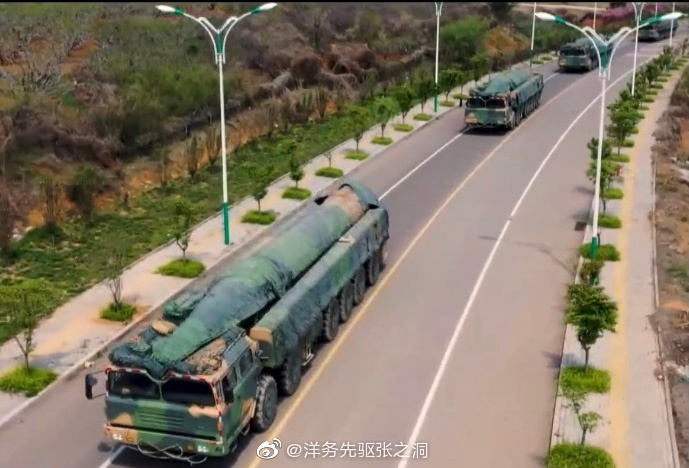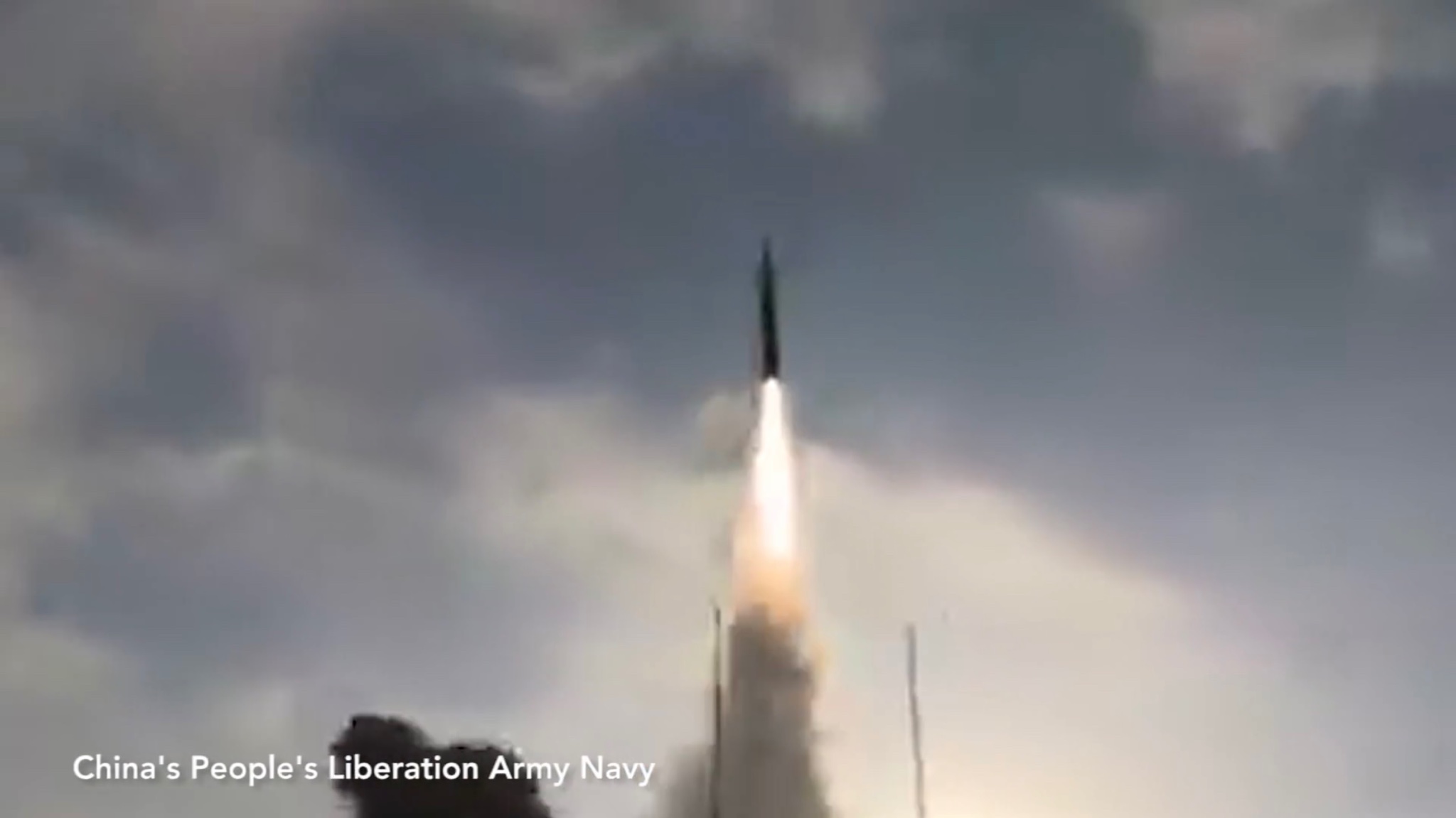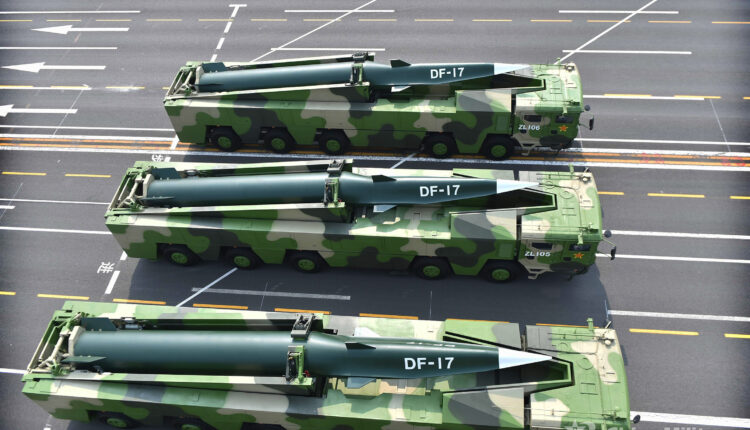©2021 Reporters Post24. All Rights Reserved.
Among a sea of disclosures made by the leaked classified Pentagon document is the alarming revelation that China tested a long-range hypersonic missile dubbed the ‘DF-27’ that can penetrate the US mainland defenses.
Although the disclosures related to the Russia-Ukraine war have hogged the limelight, the classified documents also offer a significant glimpse into security risks posed to the US by China. For instance, the paper revealed how China had agreed to supply lethal weapons to Russia, without giving further details.
However, the most shocking is China’s secret DF-27 ICBM test, which the country or the United States did not publicize. The Washington Post reported that Beijing conducted a test with its latest advanced experimental missile, the DF-27 ICBM, on February 25, 2023.
According to the document, the vehicle flew for 12 minutes over 1,300 miles (2,100 kilometers) and had a “high probability” of breaching American ballistic missile defense systems. The leaks have, thus, exposed the massive leaps that Beijing has made in its hypersonic program.
“The DF-27 is designed to enhance [China’s] ability to hold targets at risk beyond the Second Island Chain and possesses a high probability of penetrating US ballistic missile defense,” according to the daily intelligence update published on February 28 and has since been leaked online.

Earlier, a defense department report noted in 2021 that the missile had a range of 5,000 to 8,000 kilometers. This means that the DF-27 can reach any target in East or Southeast Asia and a significant portion of the Pacific, including Guam, home to strategic US military bases.
The new missile has a “hypersonic glide” capability in addition to its increased range, making it a more powerful “carrier killer” than its predecessors by being able to maneuver to escape American and ally missile defenses, according to an opinion piece written by Josh Rogin.
Although details about the latest hypersonic missile remain scarce, some previous reports have identified the DF-27 as belonging to the same third-generation of China’s strategic nuclear weapons as the DF-41.
The reports also noted that the DF-27’s 4,500–7,000 kilometers range is comparable to that of the DF-4 or DF-4A. It is expected to be equipped with a hypersonic weapon designed and tested to attack the US mainland or a naval facility in Hawaii.
China’s Hypersonic Threat Is Growing
However, this is not the first Chinese hypersonic test that has unsettled the United States. In 2021, China tested a nuclear-capable missile carrying a hypersonic glide vehicle that went around the world and missed the intended target with a very close margin. A second test was reportedly conducted soon after.
General John Hyten, the vice chairman of the Joint Chiefs of Staff, previously told CBS News while commenting on China’s hypersonic weapons test that the tests “should create a sense of urgency” in the US. The Pentagon has since been keenly watching China’s hypersonic weapon development.
Last year, a Pentagon report dwelled on the threat posed by the DF-17. It read, “The DF-17 passed several tests successfully and is deployed operationally. While the DF-17 is primarily a conventional platform, it may be equipped with a nuclear warhead.
Citing a claim by a Chinese military expert, the Pentagon added that the “primary purpose of the DF-17” is striking bases and fleets in the Western Pacific.
However, China’s hypersonic capabilities are not limited to the DF-17, and US Generals have acknowledged this on multiple occasions. On March 10 this year, the chief scientist for science and technology at the Defense Intelligence Agency informed US legislators that China currently outpaces Russia regarding supporting infrastructure and system numbers when it comes to hypersonic capabilities.
A House Armed Services subcommittee was hearing the testimony from Paul Freisthler, the chief scientist for the DIA’s analysis branch, who claimed that China had made significant strides in creating conventional and nuclear-armed hypersonic missile technology, and capabilities through intense, focused investment, development, testing, and deployment.
Additionally, China also possesses the hypersonic glide vehicle-equipped DF-41 intercontinental ballistic missile. The DF-41 missile, which has an operating range of more than 14,000 kilometers, may reportedly carry about ten independently targetable nuclear warheads, making it capable of attacking any area on Earth.
Besides, it also sports the YJ-21 anti-ship hypersonic missile that could hit the target at a speed of 3,400 meters per second (11,155 feet per second) after traveling at a speed of Mach 6 during its entire trajectory and then at Mach 10 at its terminal velocity.

China’s anti-ship hypersonic missiles are more dangerous, as senior US commanders believe that missiles can hit moving targets. They can do dynamic maneuvering during reentry, enabling them to strike massive ships during the terminal phase of flight. This has earned them the moniker of ‘Aircraft Carrier killers.’
Adding to this already loaded kitty, the DF-27 could pose a significant risk to the United States, deriding the latter’s missile defense capabilities. Since the DF-27 is speculated to carry both conventional and nuclear weapons, it could be considered a tactical and strategic weapon.
The threat is exacerbated by the fact that the United States or any of its allies currently lack a credible defense against Chinese hypersonic missiles. It is much harder to intercept hypersonic missiles because they move at unprecedented speeds and can be steered off course.
Moreover, trailing behind China, the US has been unable to develop a hypersonic missile. In fact, after a spate of failed testing, Washington recently decided to abandon its AGM-183 ARRW missile program so it could focus on other hypersonic weapons that remain under development.
The significant gap in hypersonic capability between the two adversaries has made the United States sit up and watch. The threat posed by Beijing’s long-range hypersonic missiles is aggravated by rising tensions related to the Taiwan issue between the two countries. China recently simulated military drills encircling Taiwan and later concluded it was “ready to fight.”
Military experts and some United States personnel have warned that a conflict between the two mammoth militaries was possible. Against that backdrop, China’s long-range hypersonic missiles, like the DF-27, can threaten some strategic American military assets in the Pacific.


